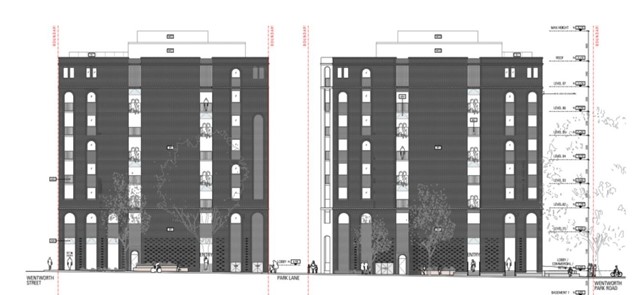In 1974, the National Trust identified Glebe as containing “the largest continuous number of 1860s and ’70s cottages and terraces forming a continuous townscape in Australia” noting that “its scale and character had been little disturbed by modern intrusion”.
In the same year, the Whitlam government purchased 700 houses from the Anglican Church and initiated the visionary Glebe Project whereby the houses were restored and renovated for the continued use by tenants on low incomes.
In 1984, ownership of the estates was transferred to the NSW government who completed the restoration of the houses and added over 1,000 bedrooms of accommodation through well-designed low-rise infill.
Glebe’s heritage lies in its urban and social fabric. It is about buildings, streetscapes and people. The traditions of the former church estates as a low-rise, low-income, inner-city community date back over 150 years. Gentrification of inner-city suburbs has made the combination of Glebe’s urban and social fabric unique in Sydney.
The old houses with their front verandahs built close to the street and beautiful streetscapes made for walking, create a neighbourly suburb that fosters spontaneous social interaction. The brilliance of the infill designed by the NSW Housing Commission’s Inner City Housing Team was that it sustained this tradition by giving the new flats private open space overlooking the street, thereby connecting the residents to the community.

Almost 50 years of good planning is now being overturned by the NSW Land and Housing Corporation who, ignoring heritage and community, are treating Glebe as a land bank by selling the old houses and forcing, through spot rezonings in heritage conservation areas, to remove nine-metre height limits to allow the construction of eight-storey apartment buildings on the 1980s infill sites.
The tragedy is that there are opportunities to create additional density without destroying the character of Glebe. The present government seem to have only one approach to town planning which is high-rise. This unsubtle and unsophisticated approach will destroy the variety and character which makes Sydney a great city. As we bury the topography in mountains of masonry and replace areas rich in character with monolithic apartment buildings we run the risk, in the words of Gertrude Stein, of becoming a place where “there is no there there”.
_______________
For more information about threats to Glebe, enter YouTube, The Glebe Society, Know your History and Heritage of Your Community into your search engine.





